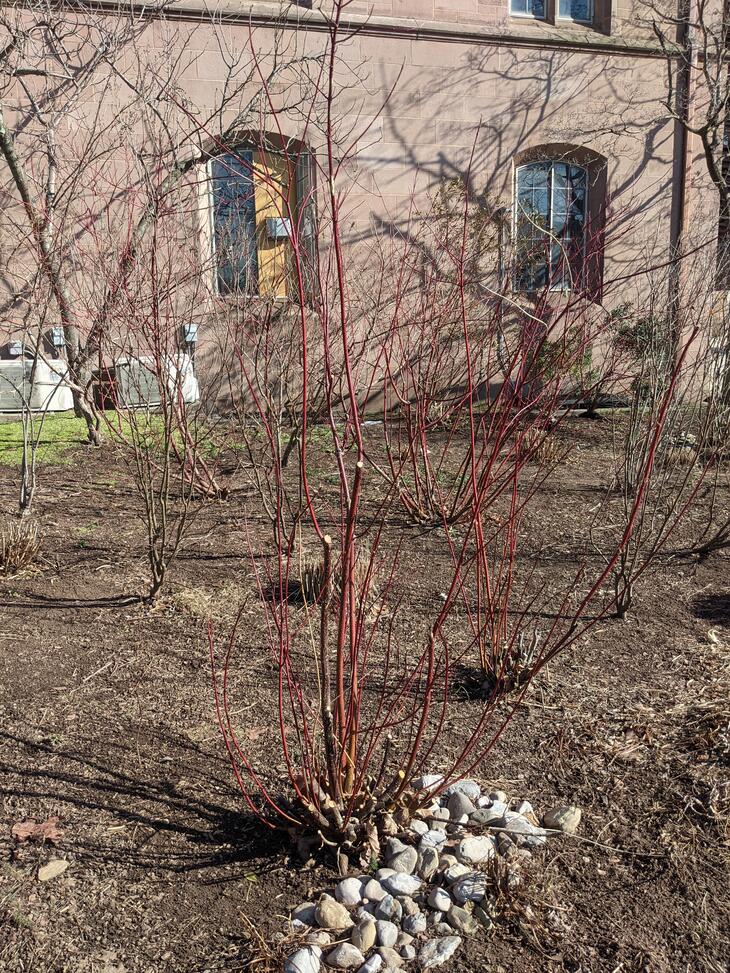The red osier dogwood is indigenous to North America, and its general name, red osier dogwood, also reveals a bit about its past. In French, an osier is a European willow, and settlers to the New World originally thought the dogwood was a willow during the winter. Interestingly, dogwood is actually a bastardization of the word dag, a Scandinavian word for skewer! The hard stems of the dogwoods have been used for skewers, farm implements, and in baskets for centuries in Europe. This particular skewer use was also shared by the Native Americans with the red osier dogwood and later by the European settlers.
Its Latin name also reveals a bit about its character. Cornus stands for “horn” in Latin while sericea “silky.” The leaves of the plant are smooth with little hairs hence the silkiness, but the branches are very strong but flexible hence horn, and have been used by Native Americans for many centuries due to these properties, as arrow shafts, wooden fish hooks, and skewers. Some even wove the branches into fish traps.
However, the Native Americans have also traditionally used the bark of the shrub as kinnikinik which was a mixture of the bark of the red osier dogwood and tobacco leaves. The effects of smoking the mixture are said to lead to drowsiness and stupefaction. Native Americans also consumed the bitter white drupes (as they contain pits) of the plant which were said to be medicinal and had properties which could stem bleeding. It was also used to treat a number of conditions including parasites, colds, and headaches. In fact, an analog to salicylic acid (i.e., aspirin), coronic acid is contained within the plant’s bark. Some tribes even peeled off the twigs of the plant and used them to white their teeth.
Humans, however, are not the only ones to enjoy this plant. The drupes of the plant are a favorite of birds, particularly the American Robin, and their thickets can sometimes be used as suitable nests. Elk, beavers, moose, chipmunks, and rabbits often graze the leaves and branches of the plant as well.
For landscaping, the shrub is primarily used to stabilize streambanks and prevent erosion. They can also be used as windbreaks, slope stabilizers, and purely for decoration. It may be planted in combination with willow.
